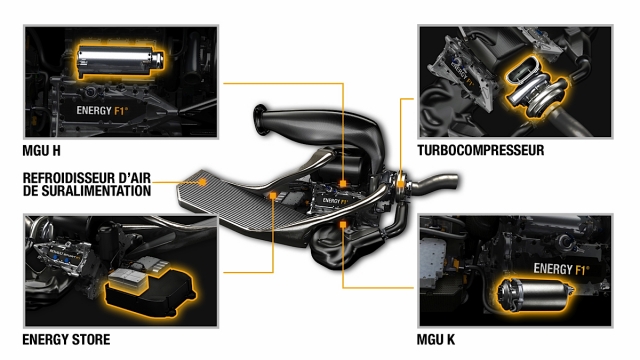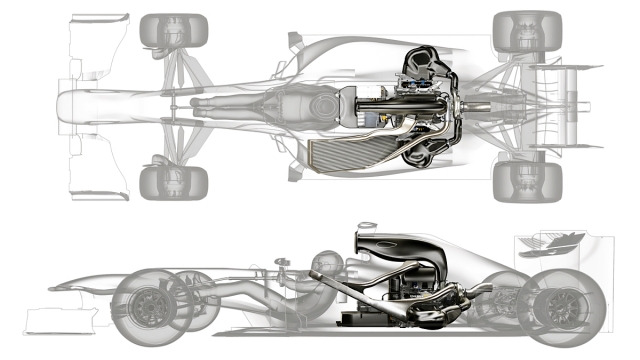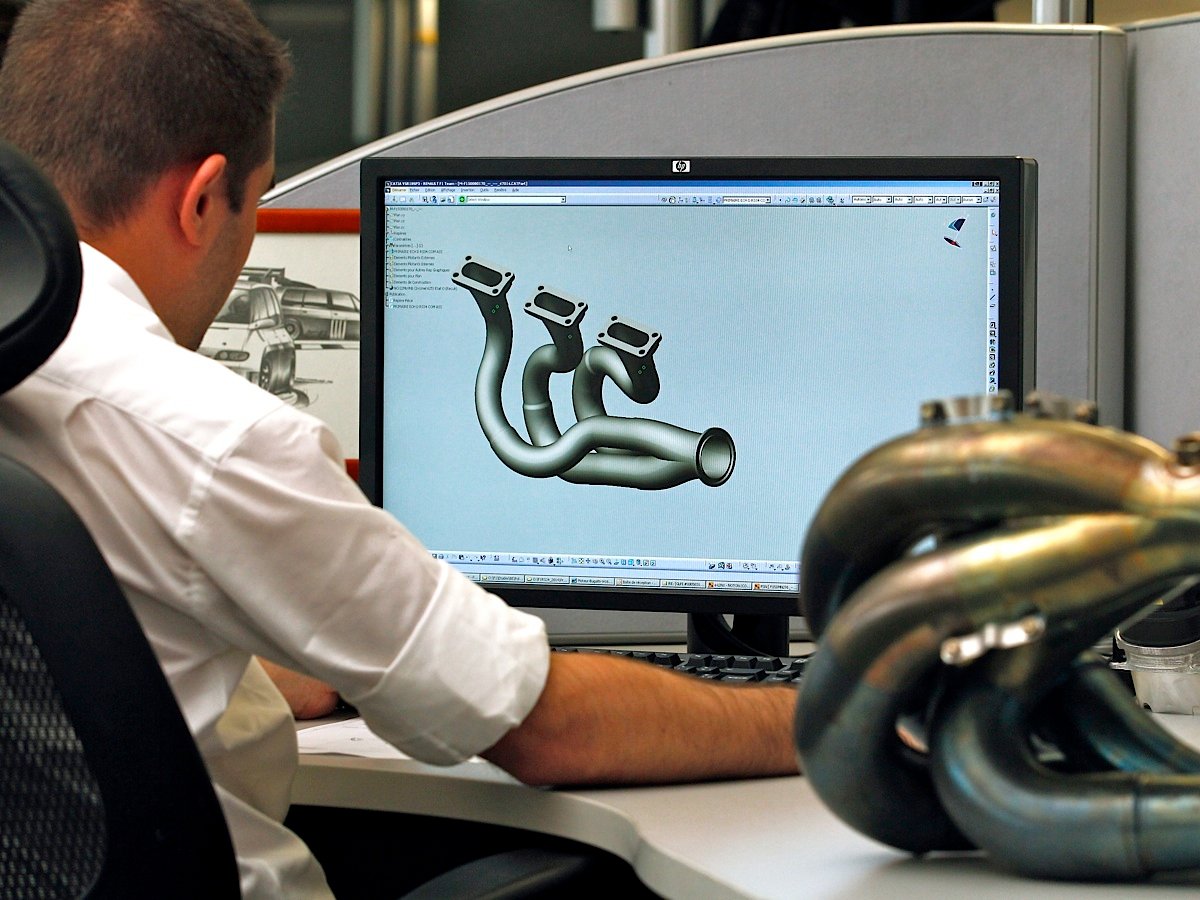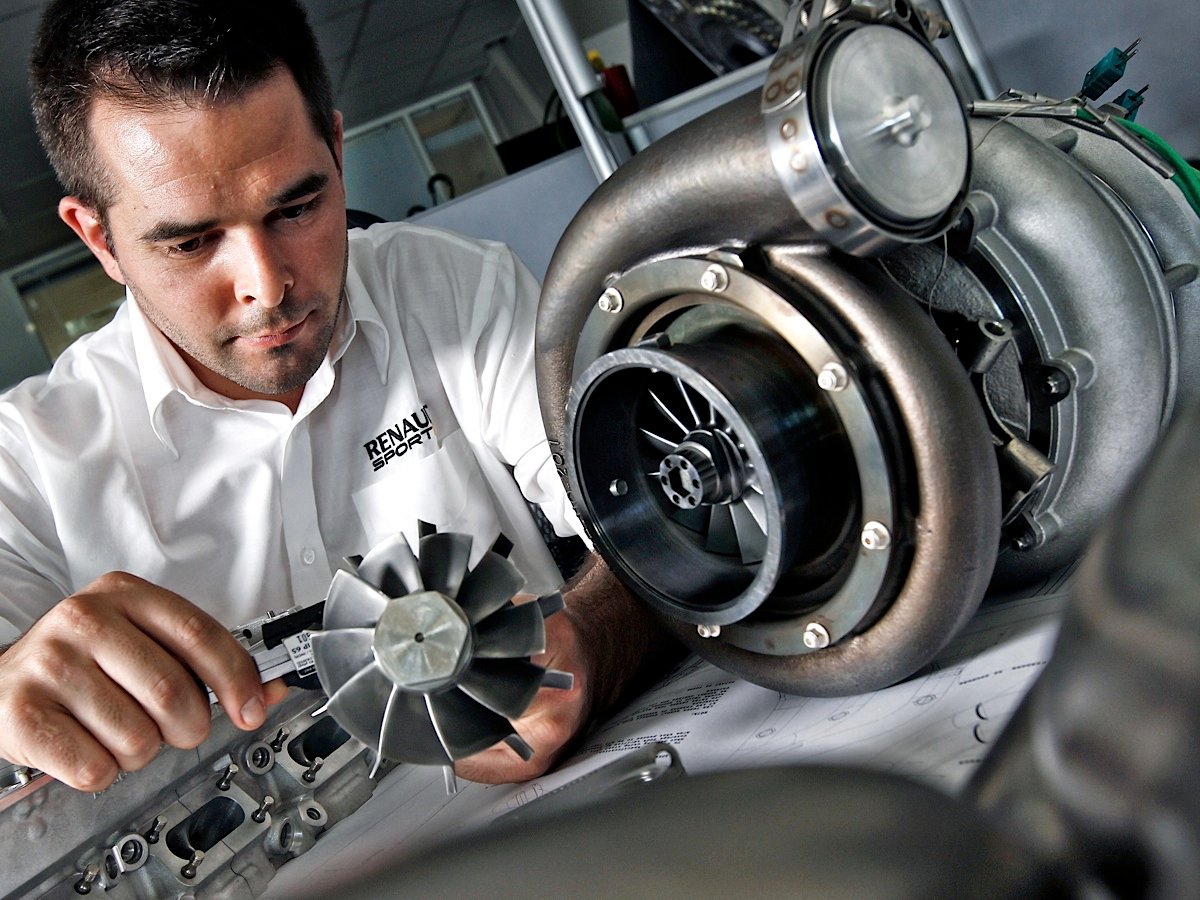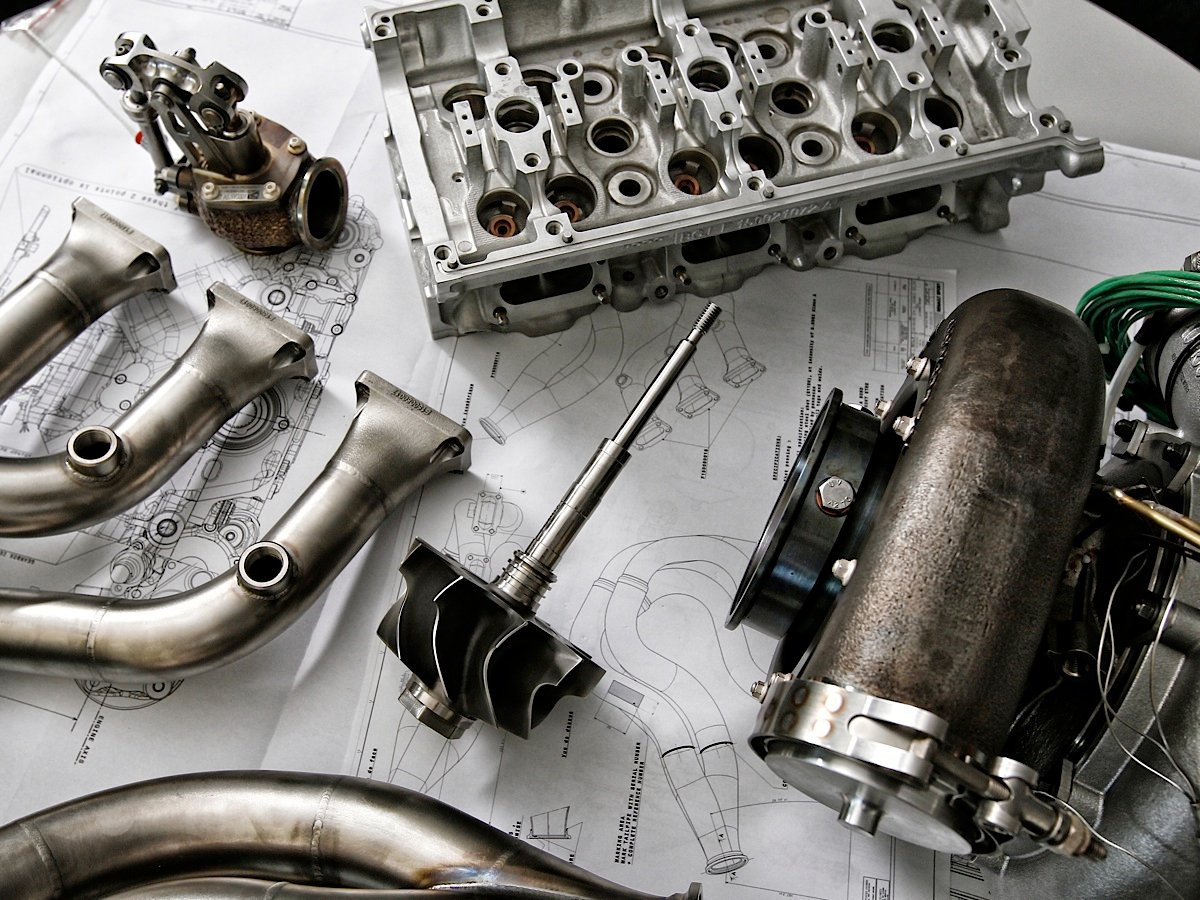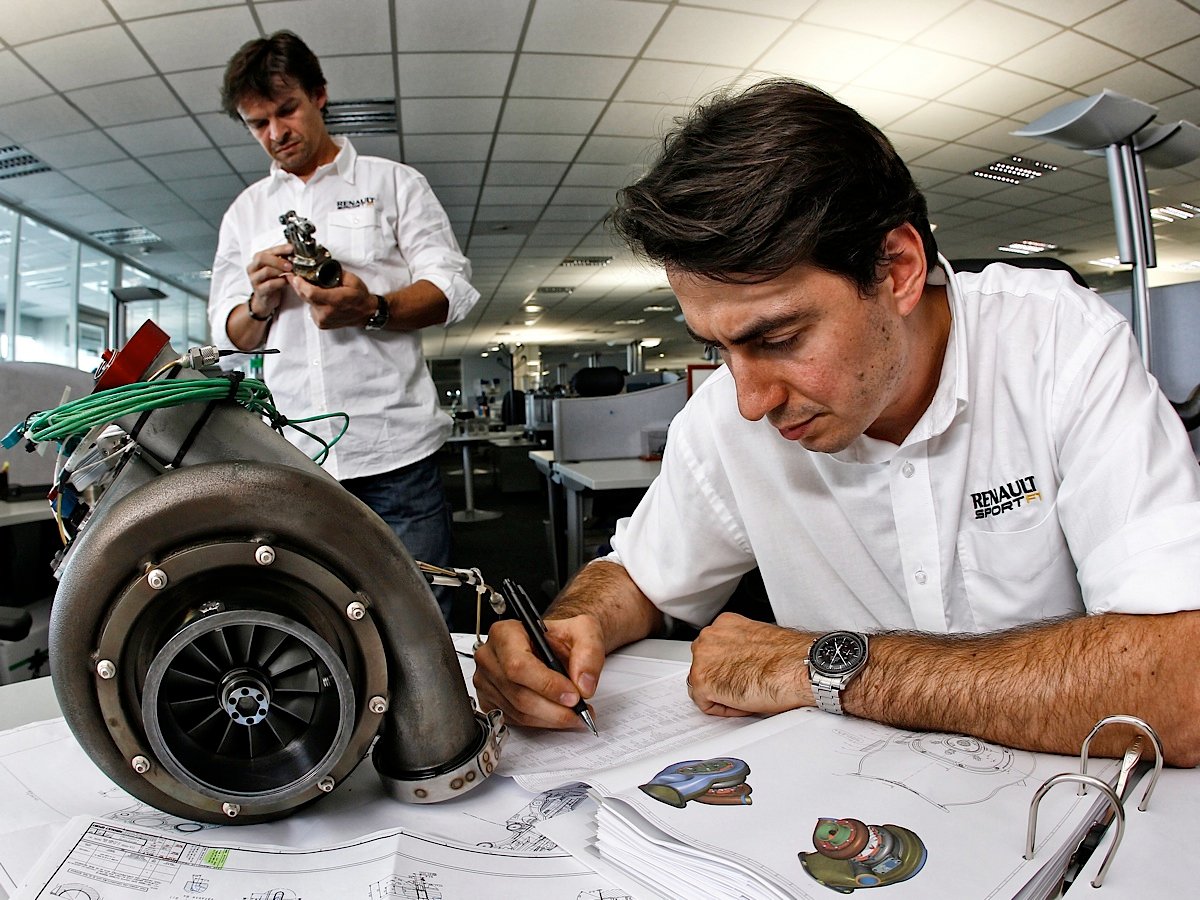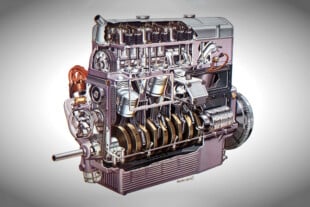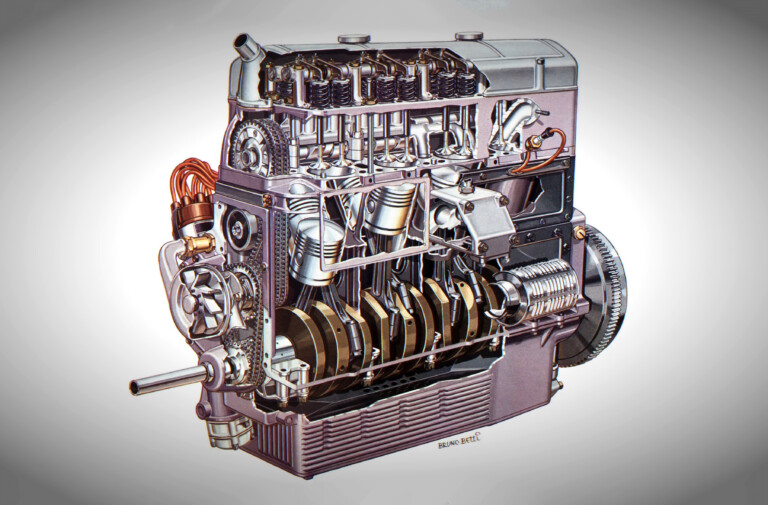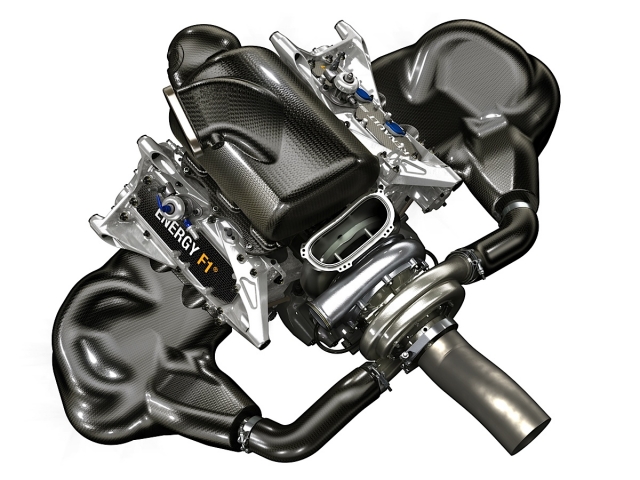 Renault unveiled its 2014 Formula 1 engine today at the Paris Air Show, showcasing a bounty of technological advancements that confirm the importance electrical power will have on the future of the automobile as well as racecars. No longer referred to as simply an engine, the new “power unit” will be called the Renault “Energy F1 2014.” It replaces Renault’s RS27 as new rules come into play for the 2014 Formula 1 season. Four teams will use the new Renault Energy F1 2014: Red Bull, Lotus, Toro Rosso and Caterham.
Renault unveiled its 2014 Formula 1 engine today at the Paris Air Show, showcasing a bounty of technological advancements that confirm the importance electrical power will have on the future of the automobile as well as racecars. No longer referred to as simply an engine, the new “power unit” will be called the Renault “Energy F1 2014.” It replaces Renault’s RS27 as new rules come into play for the 2014 Formula 1 season. Four teams will use the new Renault Energy F1 2014: Red Bull, Lotus, Toro Rosso and Caterham.
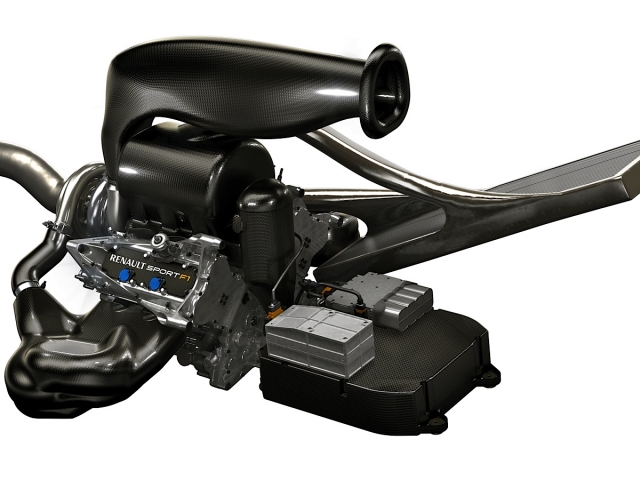 “The next generation of F1 cars will be powered by a turbocharged 1.6-liter V6 internal combustion engine of around 600 horsepower, plus around 160 horsepower of electrical propulsion from the energy recovery system,” says Rob White, deputy managing director at Renault Sport F1. “Meaning, the term ‘engine’ will no longer fully describe a car’s source of propulsive power. It’s more relevant to refer to the complete system as a ‘power unit.'”
“The next generation of F1 cars will be powered by a turbocharged 1.6-liter V6 internal combustion engine of around 600 horsepower, plus around 160 horsepower of electrical propulsion from the energy recovery system,” says Rob White, deputy managing director at Renault Sport F1. “Meaning, the term ‘engine’ will no longer fully describe a car’s source of propulsive power. It’s more relevant to refer to the complete system as a ‘power unit.'”
The Energy F1 is based around a turbocharged, direct-injected V6 engine that will be limited to 15,000 rpm. Other major restrictions include a fuel-flow rate of 100 kilograms per hour, but teams can have only 100 kg of fuel for each race. At full fuel rate, the cars would run out of fuel after an hour, but F1 races typically go at least 90 minutes. Previously, F1 imposed no fuel-flow limit, and there was an average burn rate around 170 kg/h. So that means engineers were challenged to find new energy recovery systems to improve fuel economy. In fact, the new power units are expected to use 35 percent less fuel than their previous counterparts.
Call them hybrid racecars
“The F1 cars for 2014 may be categorized as a hybrid electric vehicle,” explains Naoki Tokunaga, technical director for new generation power units at Renault. “The energy management system ostensibly decides when and how much fuel to take out of the tank and when and how much energy to take out or put back into the battery. The overall objective is to minimize the time going round a lap of the circuit for a given energy budget.”
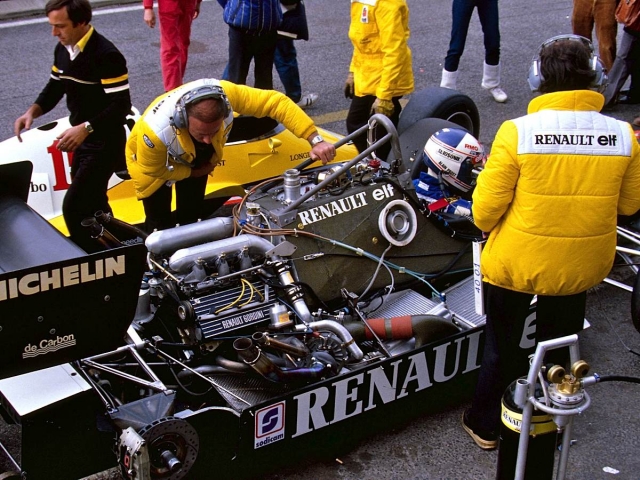
Renault offered a potent 1.5-liter V6 engine during the famed 1,000 horsepower “Turbo Era” in the ’70s and ’80s.
According to Renault, the V6 engine sports a bore/stroke of 80mm x 53mm (3.149 x 2.087 inches). There is no boost limit on the single turbo, but Renault predicts the typical maximum will be 3.5 bar, or about 50 psi, due to the fuel-flow limit. The engine will also utilize Renault’s expertise in friction-reduction technologies, including DLC coatings on the cam followers, pressure vapor deposit (PVD) treatment of the piston rings and UFLEX oil-control rings. The last one has been used for about 10 years and utilizes a U-shaped geometry that allows the ring to adapt to the exact profile of the cylinder wall for the best compromise between scraping oil off the lining and friction. To encourage durability development, Formula 1 is allowing only five engines per driver each year. That’s down from the eight engines allowed this year.
Renault will have two motor generator units (MGU) working with the turbocharged engine. The first is the MGU-K, which is connected to the crankshaft (the K stands for Kinetic). Under braking, the MGU-K operates as a generator to slow the car, reducing the heat dissipated in the brakes. It then recovers this kinetic energy and converts it to electricity. Under acceleration, the MGU-K acts as a motor and helps propel the car. By rules, the motor is limited to 120 kW or 160 horsepower.
Using the turbo to generate electricity
The second motor generator is the MGU-H (the H stands for Heat), which is located between the cylinder banks and is connected to the turbocharger. As the turbo spins, the MGU-H will absorb power from the turbo shaft and recover heat energy from the exhaust gasses. This energy can be directed either to the MGU-K or to the storage battery. The MGU-H can also be used to control the speed of the turbo to match the air requirements of the engine. That is, it could slow it down in place of the wastegate or accelerate the compressor to compensate for turbo lag.
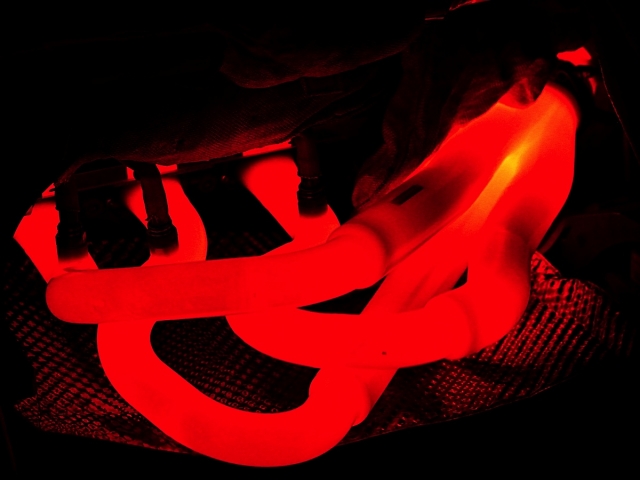 Both MGUs are tied to the energy storage batteries and make up the overall energy recovery system (ERS). Key to maintaining the “state of charge” or SOC will be a sophisticated energy management system that engineers say is just as important as the fuel management system.”
Both MGUs are tied to the energy storage batteries and make up the overall energy recovery system (ERS). Key to maintaining the “state of charge” or SOC will be a sophisticated energy management system that engineers say is just as important as the fuel management system.”
“Choosing the best split between the fuel-injected engine and electric motor to get the power out of the Power Unit will come where operation of these components is most efficient,” says Takunaga. “But again, SOC management presents a constraint to the usage of the electric propulsion. And the optimum solution will vary vastly from circuit to circuit, dependent on factors including wide-open throttle, cornering speeds and aerodynamic configuration of the car.
“There are quite a few components which will be directly or indirectly controlled by the energy management system; namely the internal combustion engine, the turbo, the ERS-K, ERS-H, battery and then the braking system,” Takunaga continues. “Each has their own requirement at any given time, for example the operating temperature limit. There can also be many different energy paths between those components. As a result, the control algorithm can be quite complex to develop and manage. What is clear, however, is that at any given time, as much energy as possible, which would otherwise be wasted, will be recovered and put back into the car system. It would not be an over-estimation to state that the F1 cars of next year are probably the most fuel and energy efficient machines on the road.”
How does it sound?
Switching from a naturally aspirated V8 that revs to 18,000 rpm to a turbo V6 limited to 15,000 has certainly generated controversy over the sonic appeal of the new engine. Even F1 boss Bernie Ecclestone has criticized the engine, fearing the less aggressive exhaust note will fail to keep fans interested. Renault disagrees:
Renault released images illustrating the intense development work behind the new F1 engine.
‘‘The sound of the engine is the sum of three principal components, exhaust, intake and mechanical noise. All three sources are still present on the V6,” says White. “At the outset, there is more energy in each combustion event but there are fewer cylinders turning at lower speed and both intake and exhaust noise are attenuated by the turbo. Overall, the sound pressure level (so the perceived volume) is lower and the nature of the sound reflects the new architecture.
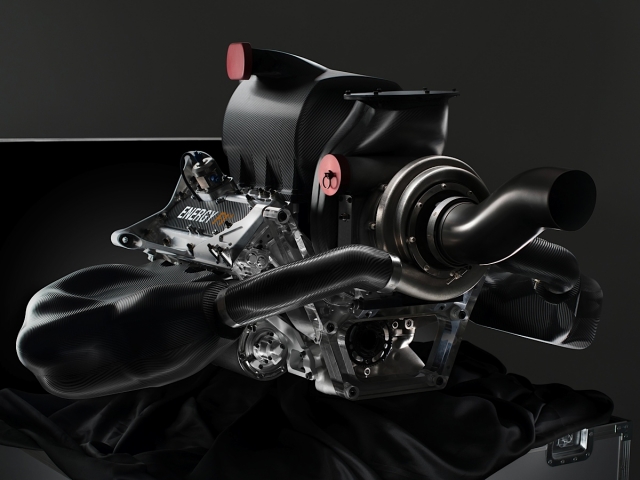 The engines remain high revving, ultra high output competition engines,” continues White. “Fundamentally the engine noise will still be loud. It will wake you from sleep, and circuit neighbors will still complain. The engine noise is just a turbocharged noise rather than a normally aspirated noise: you can just hear the turbo when the driver lifts off the throttle and the engine speed drops. I am sure some people will be nostalgic for the sound of engines from previous eras, including the preceding V8, but the sound of the new generation Power Units is just different. It’s like asking whether you like Motorhead or AC/DC. Ultimately it is a matter of personal taste. Both in concert are still pretty loud.’’
The engines remain high revving, ultra high output competition engines,” continues White. “Fundamentally the engine noise will still be loud. It will wake you from sleep, and circuit neighbors will still complain. The engine noise is just a turbocharged noise rather than a normally aspirated noise: you can just hear the turbo when the driver lifts off the throttle and the engine speed drops. I am sure some people will be nostalgic for the sound of engines from previous eras, including the preceding V8, but the sound of the new generation Power Units is just different. It’s like asking whether you like Motorhead or AC/DC. Ultimately it is a matter of personal taste. Both in concert are still pretty loud.’’
As part of its presentation, Renault released a short soundtrack of the engine. You can crank up volume and judge for yourself by clicking on the video below.



